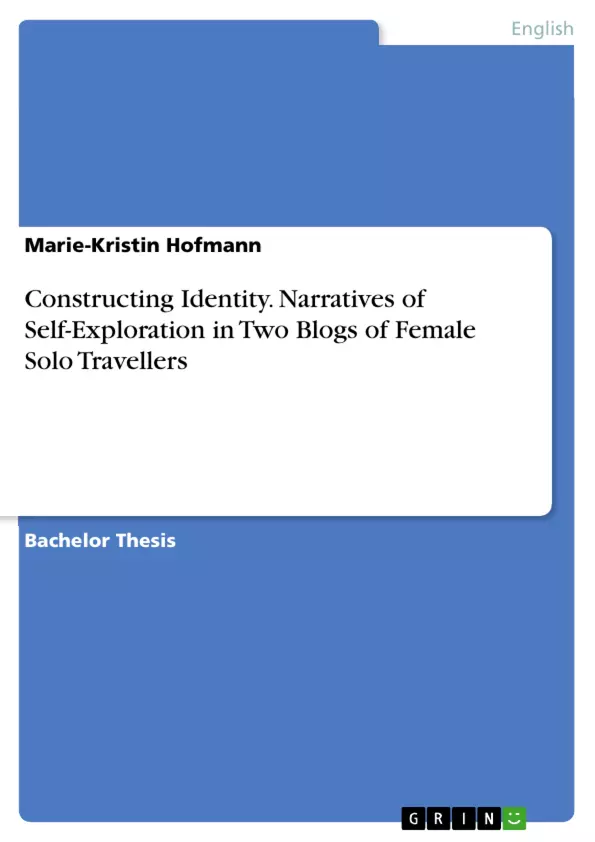Travel blogs, as narratives of identity, can provide a particularly apt insight into female solo travellers’ identity constructions and the narrative strategies they use to present these identities to their readers. Using an exploratory and qualitative approach, this paper aims at exploring the question of what kind of self-identity female solo travel bloggers construct and how they fashion it narratively.
This research goes beyond previous studies of weblogs as it identifies how identity is constructed by a particular sub-group of bloggers that has not been investigated before (female solo travellers). Moreover, it provides an overview of narrative strategies used in travel blogs defining the travel blog as its own literary genre.
Inhaltsverzeichnis (Table of Contents)
- Introduction: Female Solo Travel Writers
- Towards a Definition of the Travel Blog
- Defining the Weblog
- Defining Contemporary Travel Writing
- Combining both Definitions: the Travel Blog as its own Literary Genre
- Theorizing Narrative Identity in Travel Blogs
- Identity in the Digital Age: Two Opposing Theories
- The Postmodern Concept of Identity: the Fragmented Self
- The Modern Concept of Identity Revisited: the Coherent Self
- Self-Narration as a Form of Identity Construction
- Travel Blogs as Narratives of Identity
- Identity Construction in the Travel Blogs Young Adventuress and Creatrice Mondial
- Narrative Analysis of Blog Posts
- Ethnic Identity
- Creatrice Mondial: "What it means to be Floridian"
- Young Adventuress: "New Zealand and the rest of the World"
- Gender Identity
- Creatrice Mondial: “No one wants to be THAT girl/guy”
- Young Adventuress: “Maybe I'm becoming a feminist after all”
- Blogger Identity
- Creatrice Mondial: “An Artist's Rambling Soul”
- Young Adventuress: “Have I introduced you to Business Liz yet?”
- Traveller Identity
- Creatrice Mondial: “Tourist or Travel[1]er?”
- Young Adventuress: “The realities about travel[1]ing as an introvert”
- Results
- A Summary of the Sub-Identities presented in Creatrice Mondial
- A Summary of the Sub-Identities presented in Young Adventuress
- Comparing both Blogs with regard to Narrative Identity Construction
- Conclusion
Zielsetzung und Themenschwerpunkte (Objectives and Key Themes)
This research aims to investigate how female solo travel bloggers construct their self-identity and the narrative strategies they employ in their online narratives. The study goes beyond previous analyses of weblogs by focusing on a previously unexplored sub-group of bloggers: female solo travellers. This research provides a novel perspective on the narrative strategies used in travel blogs.
- The definition and characteristics of the travel blog as a literary genre.
- The construction of identity in the digital age, exploring both postmodern and modern theories.
- The role of self-narration in shaping identity.
- An in-depth analysis of the narrative strategies used in two specific travel blogs, Creatrice Mondial and Young Adventuress.
- The comparison of both blogs in terms of their approaches to identity construction.
Zusammenfassung der Kapitel (Chapter Summaries)
The first section of this paper establishes a theoretical framework for the subsequent narrative analysis. It defines the travel blog as a genre, drawing from existing definitions of weblogs and contemporary travel writing. It further explores theoretical models of identity and narrative identity, providing the groundwork for understanding identity construction as a narrative process.
The second section delves into a narrative analysis of a selection of blog posts from the two travel blogs, Creatrice Mondial and Young Adventuress. This analysis examines how these bloggers present and construct different aspects of their identity, including ethnic identity, gender identity, blogger identity, and traveller identity. The analysis provides specific examples from the blogs to illustrate the strategies employed by the bloggers in their narratives.
Schlüsselwörter (Keywords)
This research focuses on the intersection of travel writing, digital media, and identity construction. Key terms include travel blogs, female solo travel, narrative identity, self-exploration, online writing, digital storytelling, and gendered narratives.
- Quote paper
- Marie-Kristin Hofmann (Author), 2015, Constructing Identity. Narratives of Self-Exploration in Two Blogs of Female Solo Travellers, Munich, GRIN Verlag, https://www.grin.com/document/371649



